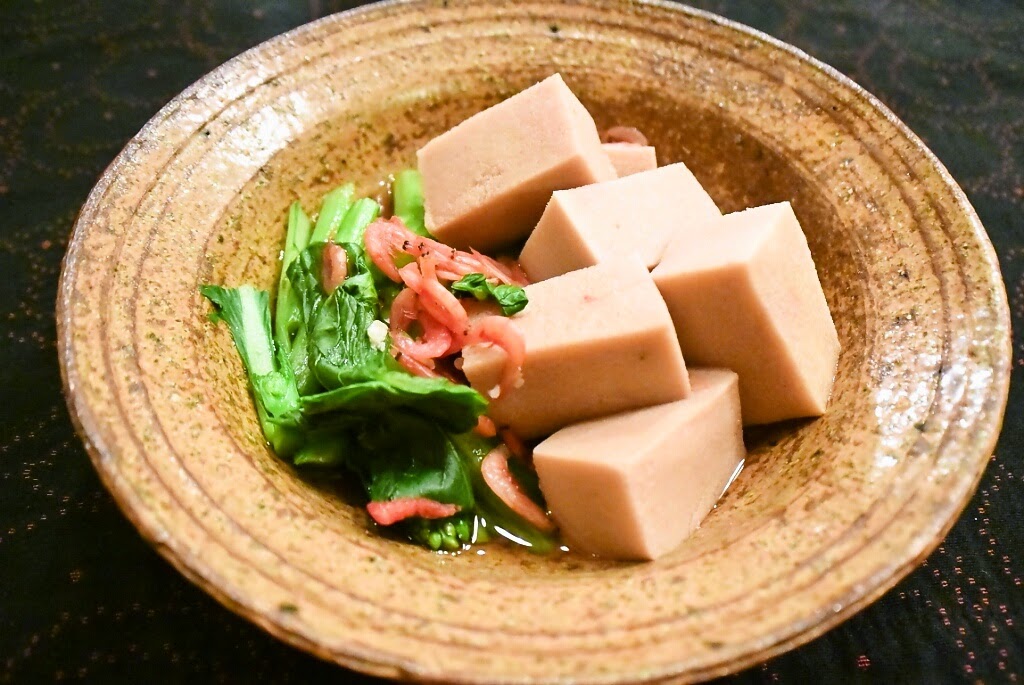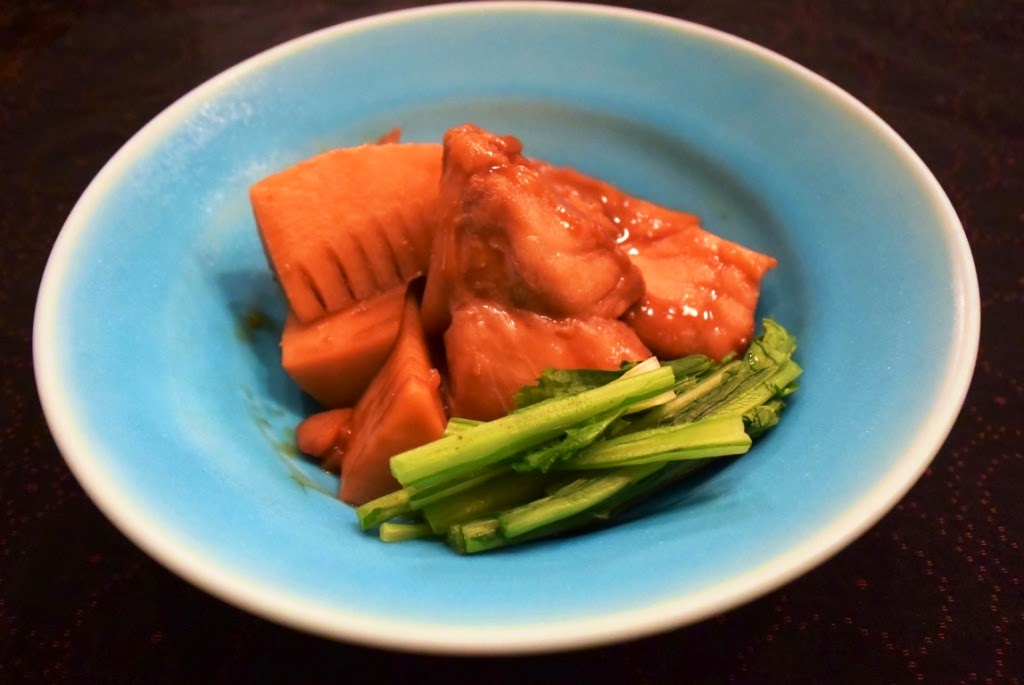Tosani -- a simmered dish finished with bonito flakes -- is a common choice for fresh bamboo shoots, and it also is a great way to create a rich, strong-flavored dish without using lots of soy sauce. Soft and chewy konnyaku is added below for contrasting texture and a fiber boost.
1/2 of recipe:
54 calories; 3.6 g protein; 1.2 g fat; 6.5 g carbohydrate; 3.6 g net carbs; 183 mg sodium (with 50% reduced-sodium soy sauce; 339 mg with regular soy sauce); 3 mg cholesterol; 2.9 g fiber
1/2 of recipe:
54 calories; 3.6 g protein; 1.2 g fat; 6.5 g carbohydrate; 3.6 g net carbs; 183 mg sodium (with 50% reduced-sodium soy sauce; 339 mg with regular soy sauce); 3 mg cholesterol; 2.9 g fiber







